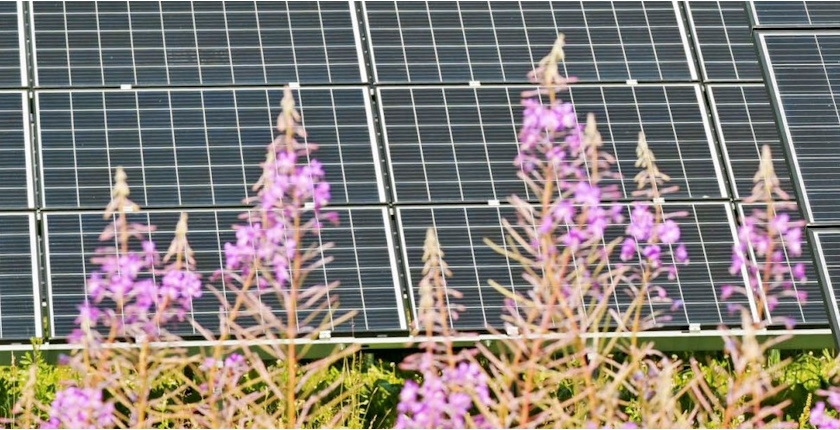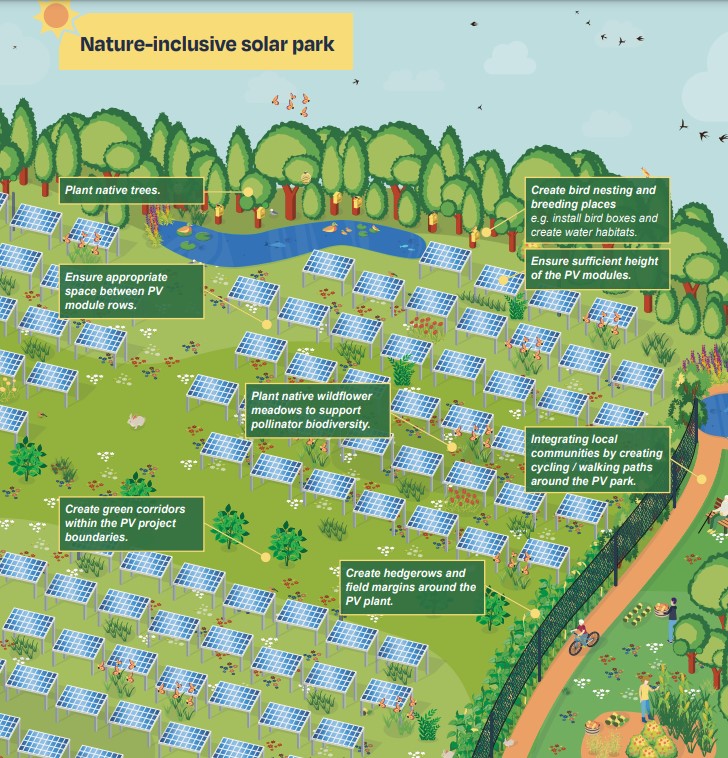
Photo: SolarPower Europe
Nature-inclusive solar parks can help not only mitigating the impacts of climate change, but also help go the extra mile to restore nature, according to a landmark policy paper to support the integration of biodiversity considerations in solar energy projects.
Since nature-inclusive solar parks can generate considerable revenue enhancing biodiversity, it is also a business model that is garnering significant interest from both private and public sectors.
In a policy paper, SolarPower Europe and The Nature Conservancy explore how solar parks can support the European Union’s nature protection and restoration goals while creating a win-win for renewable energy and biodiversity.
As the concept of nature-inclusive solar gains momentum across the EU, clear policies are urgently needed to define, incentivize, and scale up such projects to tackle the climate and biodiversity crisis in tandem, SolarPower Europe stressed.
Clear policies could create a positive momentum towards developing more solar parks with truly nature-inclusive design
According to the association, it could create a positive momentum towards developing more solar parks with a truly nature-inclusive design, supporting renewable energy deployment by facilitating environmental permitting acceleration, if stakeholders and communities are adequately consulted.
Nature-inclusive solar parks could play a crucial role in achieving the EU’s ambitious Nature Restoration Law, which aims to achieve restoration goals covering at least 20% of degraded EU land and sea by 2030, and all degraded ecosystems by 2050, reads the policy paper, produced by Metabolic.
Dubina: We are calling for a coherent EU-wide policy framework
“The Nature Conservancy and SolarPower Europe are calling for a coherent EU-wide policy framework that defines nature-inclusive solar, aligns with existing EU policies, and incorporates a monitoring and evaluation system. This kind of framework could simplify and standardise practices across EU countries, helping nature-friendly solar parks become more widespread and effective,” said Lina Dubina, Policy Advisor for Sustainability at SolarPower Europe.

According to Rebecca Humphries, Head of Climate Policy Europe for The Nature Conservancy, solar parks that are well designed and sited following the mitigation hierarchy can lead to win-win solutions for both climate and nature.
Humphries: Policymakers now have a window of opportunity
“Policymakers now have a window of opportunity to use existing frameworks, such as the Nature Restoration Law or non-price criteria, as well as develop further tools to put in place credible definitions and indicators, in order to drive more investment into solar parks that protect and restore nature”, she explained.
Nature-inclusive solar parks are solar installations designed not only to produce sustainable energy but enhance local biodiversity, combining restoration, conservation and energy production on the same plot of land.
Under the model, solar parks are strategically located to minimize negative impacts on native habitats, flora, and fauna, being designed to maximize benefits for the local ecosystem. Native plantings are integrated into the site design to maximize diversity and abundance of locally relevant species and habitats.


















Be the first one to comment on this article.